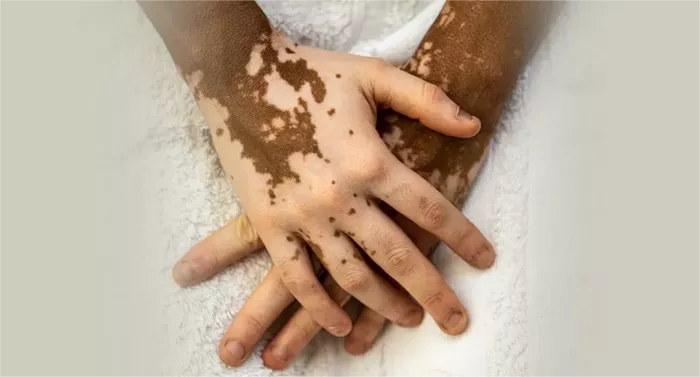Vitiligo, a dermatological condition characterized by the loss of skin pigmentation, has long perplexed medical researchers and affected individuals alike. Among the myriad questions surrounding this condition, one of the most prominent is whether vitiligo is primarily a genetic disease. The quest to unravel the genetic components of vitiligo has been ongoing for decades, with numerous studies shedding light on various aspects of its hereditary nature. In this article, we delve into the complex interplay between genetics and vitiligo, exploring the evidence, myths, and truths surrounding its genetic predisposition.
Understanding Vitiligo: An Overview
Before delving into the genetic underpinnings of vitiligo, it is essential to understand the condition itself. Vitiligo manifests as depigmented patches on the skin, resulting from the destruction of melanocytes, the cells responsible for producing melanin, the pigment that gives skin its color. This depigmentation can occur in small patches or spread across larger areas of the body, leading to significant cosmetic concerns and, in some cases, psychological distress for those affected.
The exact cause of vitiligo remains elusive, but it is widely believed to involve a combination of genetic, autoimmune, environmental, and oxidative stress factors. While the autoimmune hypothesis posits that the body’s immune system mistakenly targets and destroys melanocytes, triggering depigmentation, the genetic component of vitiligo has garnered significant attention in recent years.
Genetic Factors in Vitiligo: Separating Fact from Fiction
The question of whether vitiligo is a genetic disease has fueled considerable debate and speculation within the medical community. While there is a consensus that genetics play a role in predisposing individuals to vitiligo, the extent and nature of this genetic influence remain subject to ongoing research and exploration.
1. Familial Clustering and Heritability
One of the earliest observations supporting the genetic basis of vitiligo is the phenomenon of familial clustering. Studies have consistently shown that individuals with a family history of vitiligo are at a higher risk of developing the condition themselves. This pattern of familial aggregation suggests a genetic predisposition to vitiligo, with certain genetic variants increasing susceptibility to the disease.
Moreover, twin studies have provided further evidence of the heritability of vitiligo. Monozygotic twins, who share identical genetic makeup, are more likely to both have vitiligo compared to dizygotic twins, indicating a significant genetic influence on disease susceptibility.
2. Genome-Wide Association Studies (GWAS)
In recent years, advances in genomic research have facilitated the identification of specific genetic variants associated with vitiligo susceptibility. Genome-wide association studies (GWAS) have enabled researchers to scan the entire genome for variations linked to various diseases, including vitiligo.
Several GWAS conducted on vitiligo cohorts have identified multiple susceptibility loci, or regions of the genome, harboring genetic variants associated with the disease. These variants are often located in genes involved in immune regulation, melanocyte function, and oxidative stress response pathways, further supporting the notion of a genetic component in vitiligo etiology.
3. Candidate Gene Studies
In addition to GWAS, researchers have focused on investigating individual candidate genes implicated in vitiligo pathogenesis. Genes encoding proteins involved in melanocyte function, such as TYR (tyrosinase) and PTPN22 (protein tyrosine phosphatase non-receptor type 22), have been extensively studied for their potential role in predisposing individuals to vitiligo.
Mutations or polymorphisms in these genes can disrupt melanin production or immune regulation, increasing susceptibility to vitiligo development. While candidate gene studies have provided valuable insights into the genetic basis of vitiligo, further research is needed to elucidate the precise mechanisms through which these genetic variants contribute to disease pathogenesis.
4. Genetic Heterogeneity and Complex Inheritance Patterns
It is essential to recognize that vitiligo exhibits significant genetic heterogeneity, meaning that multiple genetic factors contribute to disease susceptibility, and the genetic architecture may vary among affected individuals. Moreover, the inheritance patterns of vitiligo appear to be complex, involving a combination of genetic and environmental influences.
While certain cases of vitiligo may follow a Mendelian inheritance pattern, with a single gene mutation leading to disease onset, the majority of cases are thought to involve multifactorial inheritance, where multiple genetic variants interact with environmental factors to determine disease risk. This complexity underscores the challenges inherent in unraveling the genetic basis of vitiligo and hig
hlights the need for comprehensive, multi-omic approaches to studying the disease.
Conclusion
In conclusion, while the question of whether vitiligo is a genetic disease may not have a simple yes or no answer, there is substantial evidence supporting the role of genetics in predisposing individuals to this complex dermatological condition. Familial clustering, twin studies, GWAS, and candidate gene studies have all contributed to our understanding of the genetic underpinnings of vitiligo, highlighting the involvement of immune dysregulation, melanocyte dysfunction, and oxidative stress pathways in disease pathogenesis.
Moving forward, further research is needed to elucidate the specific genetic variants and molecular mechanisms contributing to vitiligo susceptibility fully. Integrating genetic data with other omics approaches, such as transcriptomics, epigenomics, and proteomics, holds promise for uncovering novel therapeutic targets and personalized treatment strategies for this challenging condition.
As our understanding of the genetic basis of vitiligo continues to evolve, it is essential to recognize the multifaceted nature of the disease and the complex interplay between genetic, environmental, and immunological factors. By embracing a holistic approach to vitiligo research, we can strive towards more effective management and ultimately, improved outcomes for individuals living with this enigmatic condition.
























